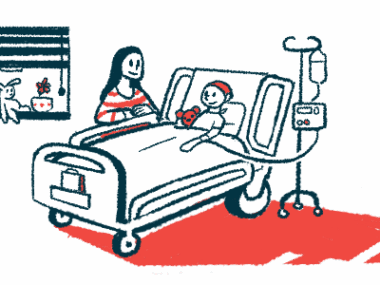More stem cells for sickle cell gene therapy readied with motixafortide
Even more cells collected when motixafortide is combined with natalizumab
Written by |

It may be possible to collect nearly three times as many stem cells for gene therapy for sickle cell disease (SCD) with BioLineRx’s motixafortide than with standard plerixafor, and even more when it’s combined with natalizumab, a Phase 1 study shows.
The proof-of-concept clinical trial (NCT05618301) is testing how safe and well tolerated motixafortide is in a small group of adults with SCD, and how well it works alone or with natalizumab to mobilize CD34-positive hematopoietic stem cells, which can give rise to red blood cells.
“We are encouraged by the initial findings in this Phase 1 study showing that motixafortide is safe and well tolerated and may hold potential to improve the overall treatment process and access to gene therapy for more people with SCD,” Philip Serlin, BioLineRx’s CEO, said in a company press release.
The company is recruiting for a second Phase 1 clinical trial (NCT06442761) that it’s running in collaboration with sponsor St. Jude Children’s Research Hospital to test the safety and tolerability of one or two doses of motixafortide given as an injection under the skin, or subcutaneously.
Zachary Crees, MD, the trial’s principal investigator at Washington University School of Medicine in St. Louis, will present what he called “encouraging findings” at the American Society of Hematology (ASH) annual meeting, Dec. 7-10, in San Diego.
“Motixafortide alone, or in combination with natalizumab, could mobilize and potentially collect the number of stem cells required for approved gene therapies in a single apheresis cycle,” Crees said. In apheresis, a machine is used to remove stem cells from a patient’s blood and return the rest of it to the body.
The abstract for Crees’ oral presentation is titled, “Motixafortide (CXCR4 Inhibition) Alone and in Combination with Natalizumab (VLA-4 Inhibition) As a Novel Regimen to Mobilize Hematopoietic Stem Cells for Gene Therapies in Sickle Cell Disease: A First-in-Human, Proof-of-Principle Safety and Feasibility Study.”
Improving stem cell collection for gene therapy
SCD is caused by genetic mutations that result in a faulty version of hemoglobin, the protein that carries oxygen in red blood cells, being produced. Defective hemoglobin causes red blood cells to take on a sickle shape that makes them prone to dying early, leading to anemia, which is a shortage of red blood cells.
The goal of gene therapy for SCD is to deliver genetic instructions the body can use to produce a version of hemoglobin that prevents red blood cells from sickling. This involves collecting a patient’s stem cells and editing them by inserting those genetic instructions before returning them to the patient.
Two gene therapies — Lyfgenia (lovotibeglogene autotemcel) and Casgevy (exagamglogene autotemcel) — are approved for SCD in the U.S. How well they work, however, depends largely on the number of stem cells that can be drawn out of a patient’s bone marrow into the bloodstream, so they can be collected.
“Currently available gene therapies for sickle cell disease rely on the collection of significant quantities of [CD34-positive] hematopoietic stem cells, posing challenges for many patients,” Crees said. This is because plerixafor, the standard agent for mobilizing stem cells in SCD, often fails to yield enough stem cells, despite multiple rounds.
Motixafortide, which is approved for multiple myeloma under the brand name Aphexda, blocks the CXCR4 protein on the surface of stem cells, which prevents them from staying in the bone marrow, luring them into the bloodstream where they can be collected.
Since the first patient was dosed at Washington University early this year, five patients have completed mobilization and apheresis with motixafortide alone, and four with motixafortide in combination with natalizumab, an antibody-based therapy approved as Tysabri for multiple sclerosis that also can mobilize stem cells.
Based on initial findings, researchers predicted motixafortide alone would enable 13.9 million stem cells to be collected in one day. They predicted an even higher yield — 18.6 million stem cells — with motixafortide plus natalizumab. Lyfgenia and Casgevy require 16.5 and 22 million stem cells, respectively.
The patients who’d previously used plerixafor saw better results with motixafortide. Compared with plerixafor, motixafortide mobilized 2.8 times as many stem cells when used alone and 3.2 times as many with natalizumab.
Motixafortide, alone or with natalizumab, was safe and well tolerated. Side effects were mild to moderate, and included itching and tingling or pain at the injection site and bodywide reactions like itching and hives. No patient had a vaso-occlusive event, which occur when sickled red blood cells block blood flow, causing pain and other complications.
“We look forward to continued collaboration with Washington University on this important research and our ongoing work to develop motixafortide for the potential benefit of patients with sickle cell disease,” Serlin said.






